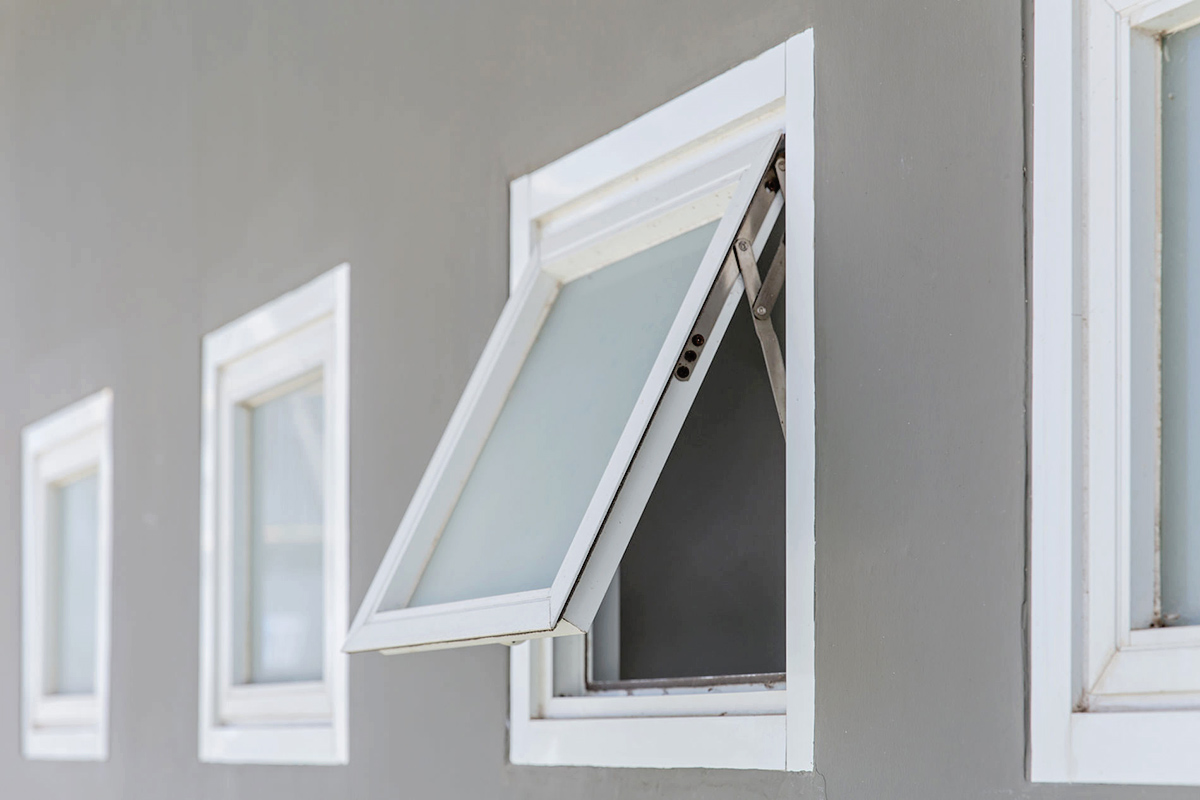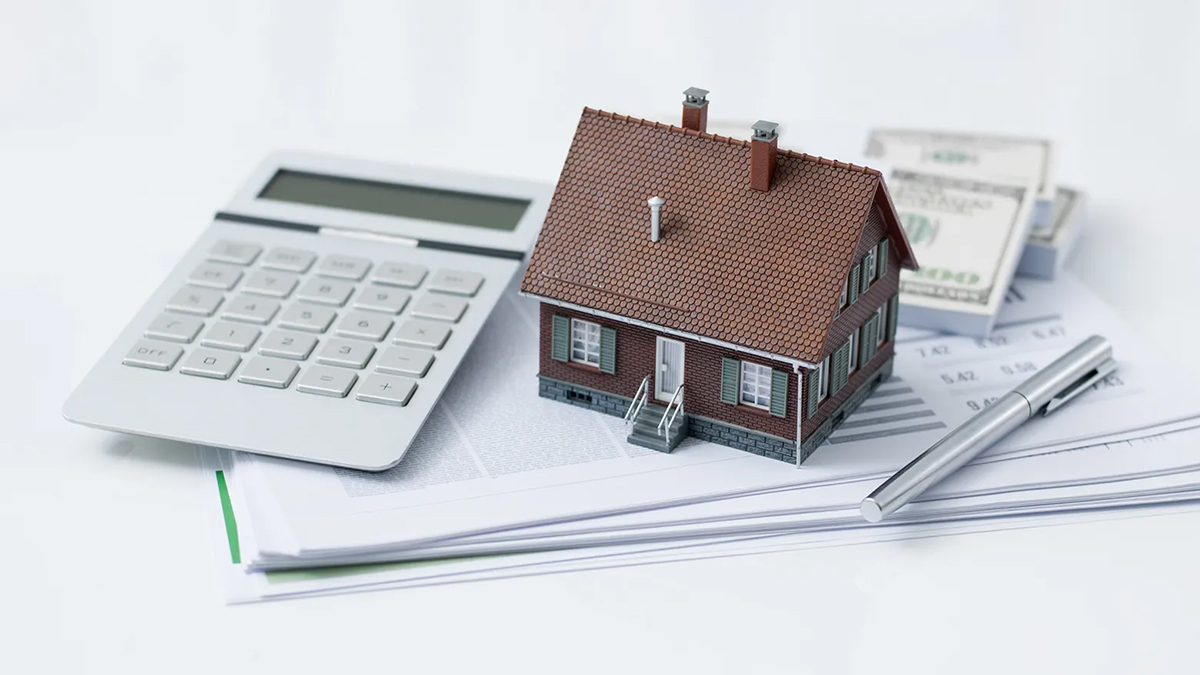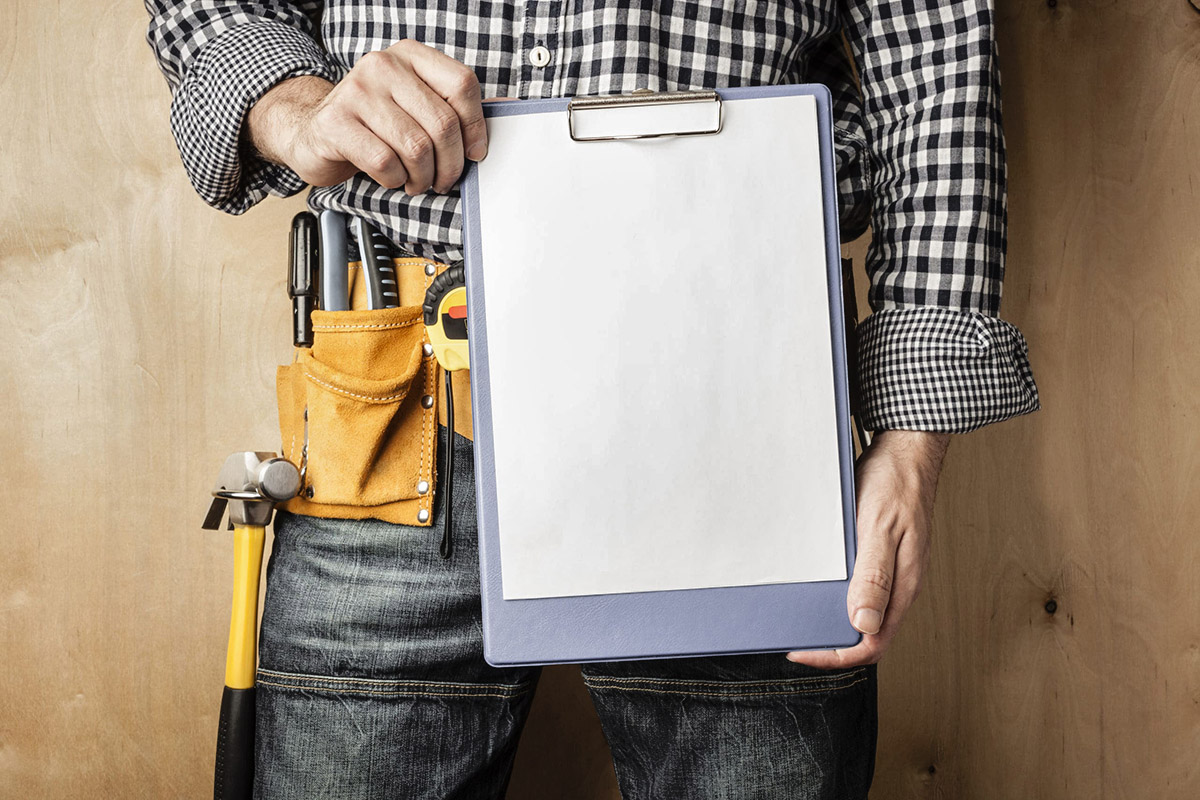Home>Renovation & DIY>Home Renovation Guides>How To Use Equity For Home Improvements


Home Renovation Guides
How To Use Equity For Home Improvements
Modified: January 4, 2024
Learn how to leverage equity for home renovations with our comprehensive guides. Explore expert tips and advice for successful home improvement projects.
(Many of the links in this article redirect to a specific reviewed product. Your purchase of these products through affiliate links helps to generate commission for Storables.com, at no extra cost. Learn more)
Introduction
Understanding the Benefits of Using Equity for Home Improvements
Embarking on home improvement projects is an exciting endeavor that can enhance the functionality, aesthetics, and value of your property. Whether you're considering a kitchen remodel, bathroom upgrade, or a new roof installation, funding these projects can be a significant financial commitment. One option to consider is leveraging the equity in your home to finance these improvements. This approach offers various benefits and considerations, which we'll explore in detail.
Utilizing the equity in your home can provide a cost-effective means to fund renovations, as it allows you to tap into the value that has accrued in your property over time. This can be particularly advantageous compared to other forms of borrowing, as home equity loans often offer lower interest rates and more favorable terms. Additionally, the interest paid on a home equity loan may be tax-deductible, making it a potentially attractive financing option for eligible homeowners.
In this comprehensive guide, we'll delve into the intricacies of leveraging home equity for renovation projects. We'll explore the different types of home equity loans, the process of using home equity for home improvements, and the associated pros and cons. Furthermore, we'll provide valuable tips for using home equity wisely, ensuring that you make informed decisions when enhancing your living space.
By the end of this guide, you'll have a thorough understanding of how to leverage your home's equity to embark on transformative home improvement projects while making sound financial choices. Let's delve into the world of home equity and discover how it can be a valuable resource for realizing your renovation aspirations.
Key Takeaways:
- Leveraging home equity for renovations can provide cost-effective funding with lower interest rates and potential tax benefits, empowering homeowners to enhance their living spaces and increase property value.
- Careful planning, budgeting, and responsible financial management are crucial when using home equity for renovations, ensuring that homeowners maximize the benefits while mitigating potential risks.
Understanding Home Equity
Home equity is a valuable asset that represents the difference between the current market value of your home and the outstanding balance on your mortgage. As you make mortgage payments and the property appreciates in value, your equity grows, providing you with a financial stake in your home. This accrued equity can serve as a reservoir of untapped potential, offering opportunities to fund various endeavors, including home improvements.
Calculating your home equity is relatively straightforward. It involves subtracting the amount you owe on your mortgage from the current market value of your home. For example, if your home is valued at $300,000 and you owe $200,000 on your mortgage, your equity stands at $100,000.
Home equity is a dynamic asset that can fluctuate over time, influenced by factors such as property market trends, the principal payments made on your mortgage, and any home value-boosting renovations you undertake. Understanding the concept of home equity is pivotal when considering utilizing it to finance home improvements, as it provides clarity on the financial resources at your disposal.
Furthermore, home equity is typically leveraged through home equity loans or home equity lines of credit (HELOCs). These financial instruments allow homeowners to borrow against the equity in their homes, providing access to funds that can be used for a myriad of purposes, including remodeling, renovations, and upgrades.
By comprehending the nature and potential of home equity, you can make informed decisions regarding its utilization for home improvement projects. This understanding empowers you to navigate the financial landscape of homeownership effectively, leveraging your property’s equity to enhance your living space and increase its overall value.
Types of Home Equity Loans
When considering home equity loans, it’s essential to understand the various options available, each with its unique features and considerations. Two primary types of home equity loans are prevalent in the market: traditional home equity loans and home equity lines of credit (HELOCs).
Traditional Home Equity Loans: Also known as second mortgages, traditional home equity loans provide a lump sum of money that is repaid over a fixed term, typically with a fixed interest rate. This type of loan is ideal for one-time expenses, such as funding a specific home improvement project with a known cost. The borrower receives the entire loan amount upfront, making it easier to budget and plan for the renovation.
Home Equity Line of Credit (HELOC): HELOCs, on the other hand, function more like a credit card with a revolving credit limit. They offer flexibility by allowing homeowners to borrow funds as needed, up to a predetermined credit limit, and repay the borrowed amount over time. HELOCs often have variable interest rates, and the repayment terms may include a draw period followed by a repayment period. This type of loan is well-suited for ongoing or multiple expenses, such as phased home renovations or unforeseen repair costs.
Both traditional home equity loans and HELOCs leverage the equity in your home as collateral, making them secured loans that typically offer lower interest rates compared to unsecured borrowing options. The amount you can borrow through these loans is contingent on factors such as your credit score, income, the appraised value of your home, and the outstanding balance on your mortgage.
Understanding the distinctions between these loan types empowers homeowners to select the most suitable financing option for their specific renovation needs. Whether you prefer the predictability of a lump-sum loan or the flexibility of a revolving credit line, leveraging the right type of home equity loan can facilitate your home improvement aspirations while aligning with your financial preferences and goals.
Using Home Equity for Home Improvements
Utilizing home equity for home improvements can be a strategic and rewarding financial decision, offering homeowners the means to enhance their living spaces while potentially increasing the value of their properties. When considering this approach, it’s essential to approach the process thoughtfully and responsibly to maximize its benefits.
One of the primary advantages of using home equity for home improvements is the ability to access substantial funds at relatively favorable interest rates. This can enable you to undertake significant renovation projects that may otherwise be financially challenging. Whether you’re renovating your kitchen, adding a new room, or upgrading your outdoor living space, leveraging your home’s equity can provide the financial foundation to turn your renovation visions into reality.
Furthermore, using home equity for home improvements allows you to reinvest in your property, potentially increasing its market value. By enhancing the functionality, aesthetics, and overall appeal of your home, you may attract prospective buyers and command a higher resale value in the future. This can be particularly advantageous for homeowners looking to elevate their property’s market position and capitalize on their investment.
When utilizing home equity for home improvements, it’s crucial to approach the process with a clear renovation plan and a well-defined budget. This ensures that the funds accessed through home equity loans are allocated efficiently and effectively, maximizing the impact of the renovations while managing costs prudently. Additionally, engaging reputable contractors and obtaining necessary permits and approvals are essential steps to guarantee the successful execution of your home improvement projects.
By leveraging home equity for home improvements, homeowners can transform their living spaces, increase their property’s value, and create environments that align with their evolving needs and preferences. This approach empowers individuals to embark on ambitious renovation endeavors while leveraging the financial resources available within their homes, ultimately enhancing their overall homeownership experience.
Consider a home equity loan or line of credit to fund your home improvements. These options allow you to borrow against the value of your home and typically offer lower interest rates than other types of loans.
Pros and Cons of Using Home Equity for Home Improvements
When contemplating the use of home equity for home improvements, it’s crucial to weigh the advantages and potential drawbacks associated with this financing strategy. By evaluating the pros and cons, homeowners can make informed decisions that align with their financial goals and renovation aspirations.
Pros:
- Lower Interest Rates: Home equity loans often offer lower interest rates compared to other forms of borrowing, making them a cost-effective financing option for home improvements.
- Tax Deductibility: In many cases, the interest paid on home equity loans used for home improvements may be tax-deductible, providing potential financial benefits for eligible homeowners.
- Substantial Funding: Leveraging home equity can provide access to significant funds, enabling homeowners to undertake extensive renovation projects that may enhance the functionality, aesthetics, and value of their properties.
- Potential Value Appreciation: Well-executed home improvements funded through equity can potentially increase the market value of the property, offering long-term financial benefits.
- Flexible Repayment Terms: Home equity loans often feature flexible repayment terms, accommodating various budgeting and financial preferences.
Cons:
- Risk of Foreclosure: Using home equity as collateral carries the risk of foreclosure if repayment obligations are not met, potentially jeopardizing homeownership.
- Accrued Debt: Taking on additional debt through home equity loans increases financial obligations and requires prudent budgeting and financial management.
- Property Devaluation: If home improvements fail to yield the anticipated value appreciation, the property’s market value may not align with the invested funds, impacting the return on investment.
- Interest Costs: While the interest on home equity loans may be tax-deductible, borrowers should consider the cumulative interest costs over the loan term when assessing the overall financial implications.
- Market Volatility: Fluctuations in the property market can impact the perceived value of home improvements, influencing the potential return on investment.
By carefully considering these pros and cons, homeowners can make informed decisions regarding the use of home equity for home improvements, ensuring that their financing choices align with their long-term financial well-being and property enhancement objectives.
Tips for Using Home Equity Wisely
When leveraging home equity for home improvements, it’s essential to approach the process with prudence and foresight to optimize the benefits while mitigating potential risks. By implementing the following tips, homeowners can utilize their home’s equity wisely, ensuring that their renovation endeavors align with their financial well-being and property enhancement goals.
- Thorough Financial Assessment: Before tapping into home equity, conduct a comprehensive financial assessment to ascertain the feasibility of the renovation project and the potential impact on your overall financial position. Consider factors such as current mortgage terms, existing debt obligations, and long-term financial goals.
- Clear Renovation Plan: Develop a clear and detailed renovation plan outlining the scope of the project, anticipated costs, and desired outcomes. Having a well-defined plan facilitates informed decision-making and ensures that the allocated funds are used efficiently.
- Prudent Budgeting: Establish a realistic budget for the renovation, factoring in potential contingencies and unforeseen expenses. Adhering to a well-structured budget helps prevent overspending and ensures that the funds obtained through home equity are utilized judiciously.
- Comparative Loan Analysis: Compare various home equity loan options, including interest rates, repayment terms, and associated fees, to identify the most favorable financing arrangement that aligns with your financial preferences and renovation requirements.
- Professional Contractor Selection: Engage reputable and qualified contractors for the renovation project. Obtain multiple quotes, review past work, and ensure that the chosen professionals are licensed, insured, and capable of delivering the desired results.
- Regular Project Oversight: Maintain active involvement in the renovation process, regularly reviewing the project’s progress, addressing any issues promptly, and ensuring that the work adheres to the agreed-upon specifications and quality standards.
- Appropriate Permit Acquisition: Obtain necessary permits and approvals for the renovation project to ensure compliance with local building codes and regulations. Failing to secure required permits can lead to costly legal and structural complications.
- Value-Adding Enhancements: Focus on home improvements that have the potential to enhance the property’s functionality, energy efficiency, and aesthetic appeal. Prioritize renovations that may contribute to increasing the property’s market value and desirability.
- Responsible Repayment Strategy: Develop a sound repayment strategy for the home equity loan, considering your financial capacity and long-term financial objectives. Consistently meeting repayment obligations is crucial to safeguarding your home’s equity and financial stability.
- Realistic Return on Investment Expectations: Maintain realistic expectations regarding the potential return on investment from the home improvements. While strategic renovations can enhance the property’s value, market conditions and individual property dynamics can influence the realized returns.
By adhering to these tips, homeowners can harness the potential of their home’s equity to fund home improvements effectively, ensuring that the renovation projects contribute to their property’s value and their overall homeownership satisfaction.
Conclusion
In conclusion, leveraging home equity for home improvements presents an opportunity for homeowners to enhance their living spaces, increase their property’s value, and realize their renovation aspirations. By understanding the dynamics of home equity and the available financing options, individuals can make informed decisions that align with their financial goals and renovation objectives.
Home equity serves as a valuable resource that empowers homeowners to access substantial funds at favorable interest rates, providing the financial foundation to embark on transformative renovation projects. Whether it’s revamping a kitchen, renovating a bathroom, or undertaking structural enhancements, utilizing home equity can facilitate comprehensive home improvements that cater to evolving lifestyle needs and aesthetic preferences.
However, it’s essential for homeowners to approach the use of home equity for home improvements with careful consideration and responsible financial management. By evaluating the potential pros and cons, developing clear renovation plans, and implementing prudent budgeting, individuals can maximize the benefits of home equity while mitigating associated risks.
Furthermore, selecting the most suitable type of home equity loan, engaging reputable contractors, and obtaining necessary permits are pivotal steps in ensuring the successful execution of renovation projects funded through home equity. By adhering to these best practices and maintaining a focus on value-adding enhancements, homeowners can optimize the impact of their home improvements while safeguarding their property’s market position and their long-term financial well-being.
Ultimately, leveraging home equity for home improvements offers a pathway to elevate the functionality, comfort, and appeal of one’s home, creating living spaces that align with individual preferences and contribute to overall homeowner satisfaction. By leveraging the financial resources available within their properties, homeowners can embark on ambitious renovation endeavors while fostering a sense of pride in their homes and enhancing their investment potential in the real estate market.
Armed with a comprehensive understanding of home equity and the prudent utilization of financing options, homeowners can confidently pursue their home improvement visions, realizing the full potential of their properties and enriching their homeownership experience.
Frequently Asked Questions about How To Use Equity For Home Improvements
Was this page helpful?
At Storables.com, we guarantee accurate and reliable information. Our content, validated by Expert Board Contributors, is crafted following stringent Editorial Policies. We're committed to providing you with well-researched, expert-backed insights for all your informational needs.















0 thoughts on “How To Use Equity For Home Improvements”